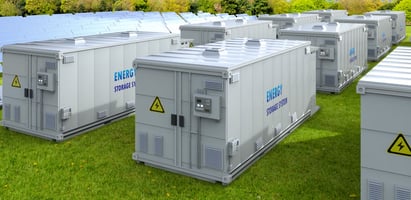A New Benchmark in Energy Storage
The Role of Energy Storage in Renewable Energy Integration
As the world strives to combat climate change and transition to a more sustainable energy future, renewable energy sources like wind and solar power have taken center stage. However, one persistent challenge threatens to hinder their full potential: renewable energy curtailment. In 2022, California curtailed more than 2,450 GWh of solar and wind output, equivalent to 10% of its monthly power consumption. This issue is not limited to California but is becoming a national challenge, resulting in 8,950 GWh of renewable energy curtailment in 2022. Energy storage emerges as a crucial solution to address this problem and maximize the utilization of renewable energy.
Understanding Renewable Energy Curtailment
The variable and intermittent nature of renewable energy sources like wind and solar power, which generate electricity based on fluctuating natural conditions such as sunlight and wind speeds, poses significant challenges for grid integration. A critical issue arises when these sources produce more power than the grid requires at a given time, potentially wasting excess energy unless it is effectively stored or transmitted.
Curtailment of renewable energy, the reduction of renewable energy delivery due to oversupply or lack of system flexibility, is increasingly becoming a norm as variable renewable energy penetrates power systems. A study by the National Renewable Energy Laboratory (NREL) on a system roughly based on the Los Angeles Department of Water and Power (LADWP) highlighted the issue. The study revealed a “curtailment paradox,” where thermal generator flexibility significantly impacts renewable curtailment at mid-levels of solar photovoltaic penetration but not at low or high levels. Also, operational costs and curtailment levels are lowered when renewables and storage are allowed to provide operating reserves. Still, it reduces the economic incentive for PV to provide these reserves in a wholesale market environment.
Integration Challenges and Solutions
Integrating renewables into power grids faces several challenges, including resource adequacy, network adequacy, frequency stability, and voltage stability. Regions with high electricity generation from VRE, such as Australia, California, Denmark, Germany, and Texas, have experienced greater system instability. To address these challenges, grid operators and designers must consider investing in new grid infrastructure and tools, retaining more dispatchable generators, increasing storage and demand-side flexibility, and implementing incentives to ensure stakeholder cooperation.
The Role of Energy Storage in Curtailment Mitigation
Energy storage, particularly battery-based systems, is pivotal in mitigating renewable energy curtailment. Here's how it works:
- Collocating Storage with Renewable Energy Plants: One strategy is to install energy storage systems near renewable energy plants. This allows excess energy to be stored in batteries when generation exceeds demand. Later, the stored energy can be released back into the grid during high-demand or low-renewable energy production periods.
- Hybrid Renewable Energy Storage Systems: Combining renewable energy sources with energy storage creates hybrid systems that can store excess energy and dispatch it when needed. For example, solar panels can charge batteries during the day, and the stored energy can be used at night or during cloudy periods.
- Advanced Forecasting and Optimization: Predictive analytics and forecasting tools can optimize renewable energy utilization. By accurately predicting when renewable resources will be most abundant, energy storage systems can be charged in advance, ensuring a steady supply of clean energy.
Benefits of Curtailment Mitigation
Maximizing the utilization of renewable energy through energy storage offers several benefits:
- Reduced Carbon Emissions: By avoiding the curtailment of clean energy, energy storage reduces carbon emissions. This aligns with the global goal of decarbonizing the energy sector.
- Grid Stability and Reliability: Energy storage helps maintain grid stability by providing a buffer against fluctuations in renewable energy generation. It ensures a consistent power supply, reducing the risk of blackouts.
- Cost Savings: Energy storage systems can store excess energy when electricity prices are low and release it when prices are high. This can lead to cost savings for both consumers and grid operators.
- Enhanced Energy Independence: Curtailment mitigation reduces the reliance on fossil fuels and conventional power plants, increasing energy independence and resilience.
- Grid Integration: Energy storage facilitates the seamless integration of renewable energy into the grid, supporting the transition to a cleaner and more sustainable energy mix.
Renewable energy integration is essential for achieving decarbonization goals, but it comes with the challenge of renewable energy curtailment. With its ability to store excess energy and dispatch it when needed, energy storage is a critical solution to this challenge. By collocating storage with renewable energy plants, deploying hybrid systems, and utilizing advanced forecasting, energy storage helps maximize the utilization of renewable energy, reduce carbon emissions, and enhance grid stability. As the world moves towards a sustainable energy future, energy storage's role in curtailing curtailment cannot be overstated. It is vital to a cleaner, greener, and more reliable energy system.

.jpg?height=200&name=iStock-1450272068%20(1).jpg)